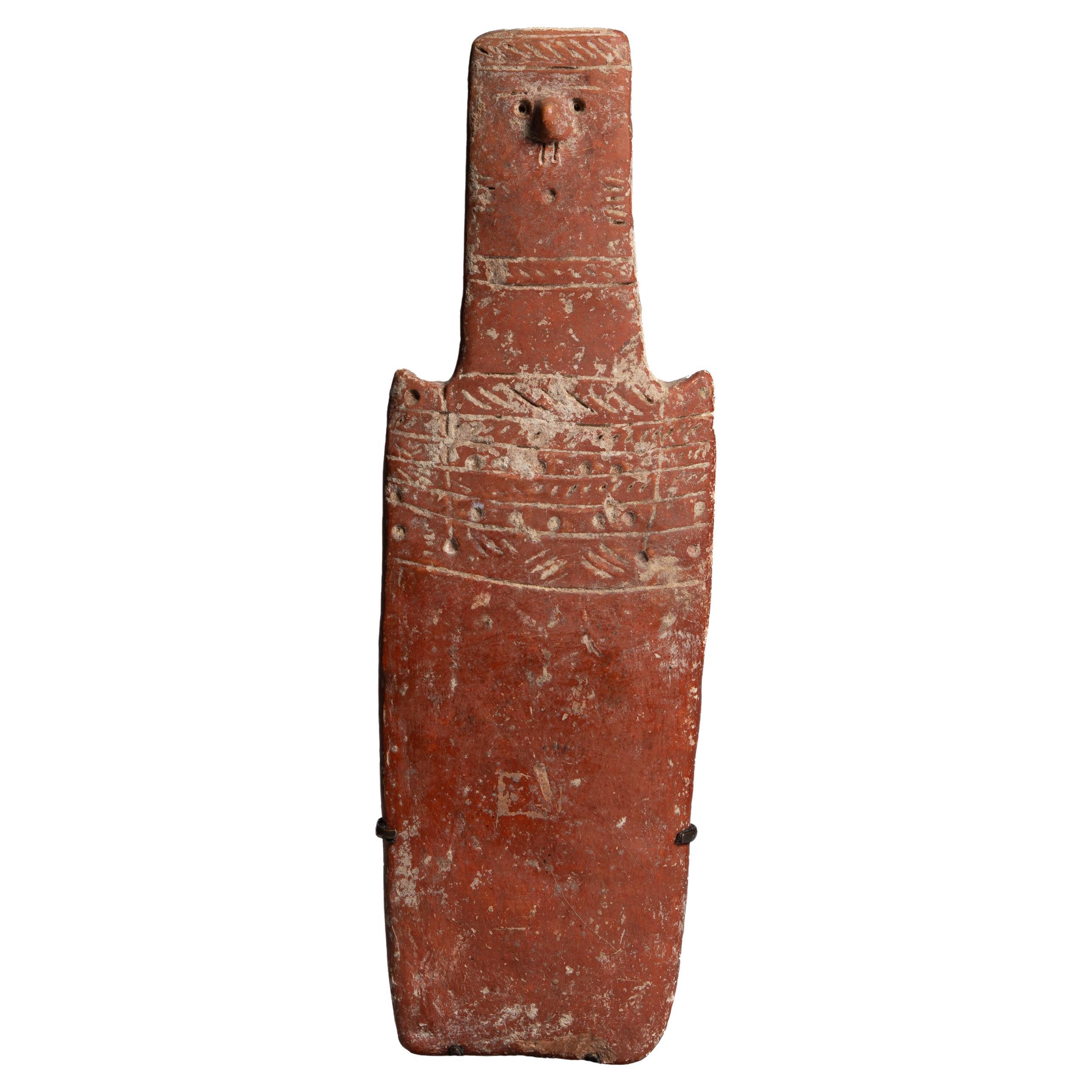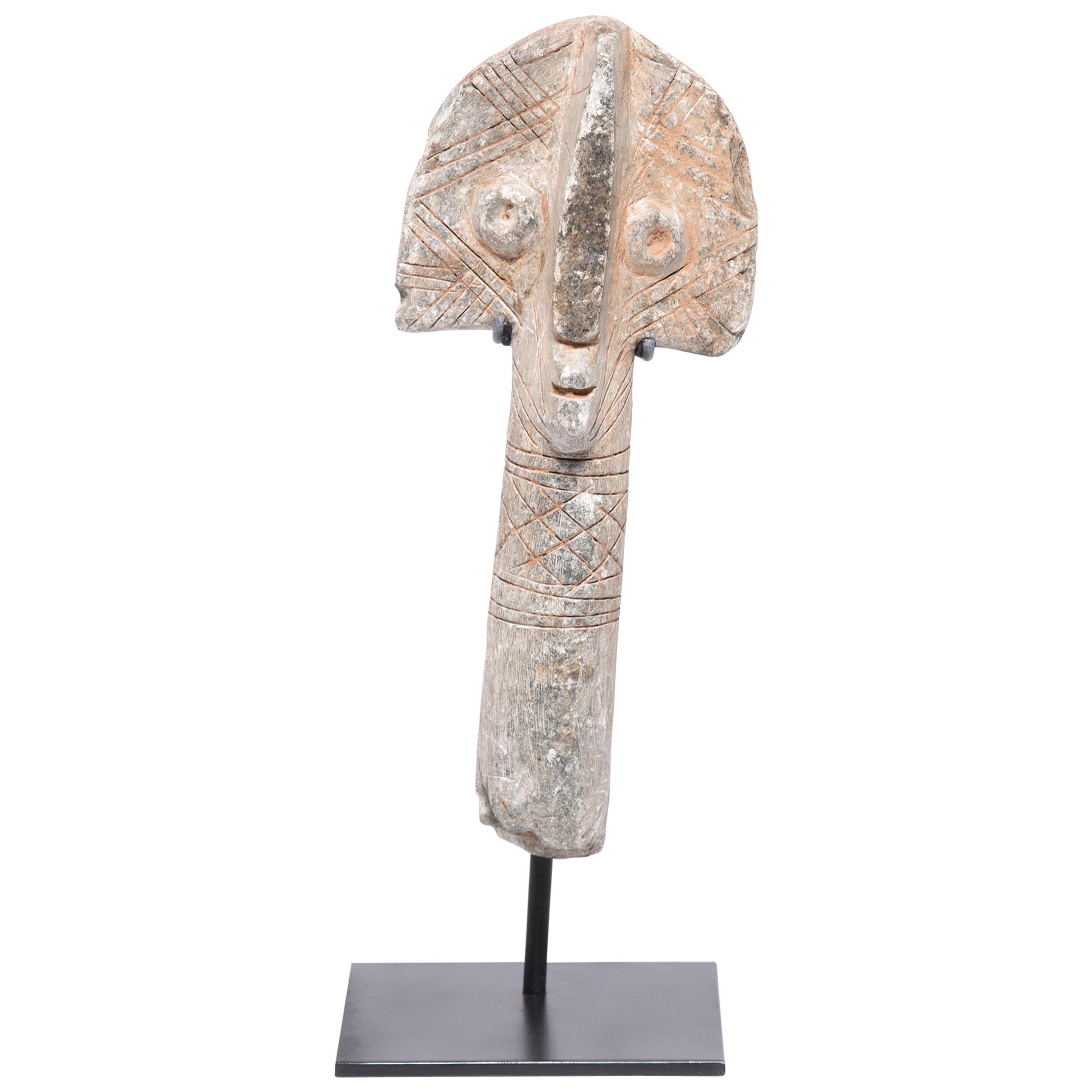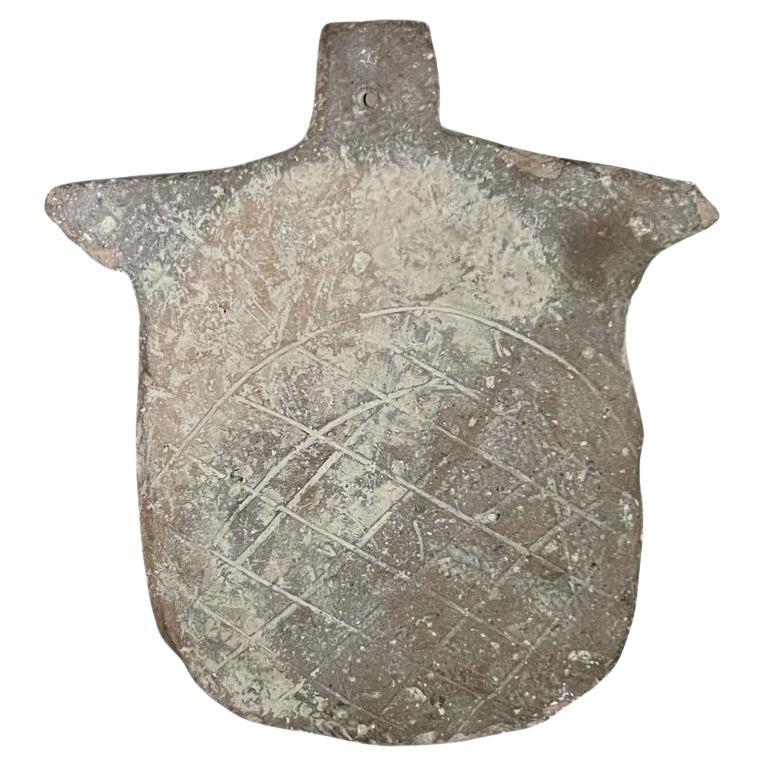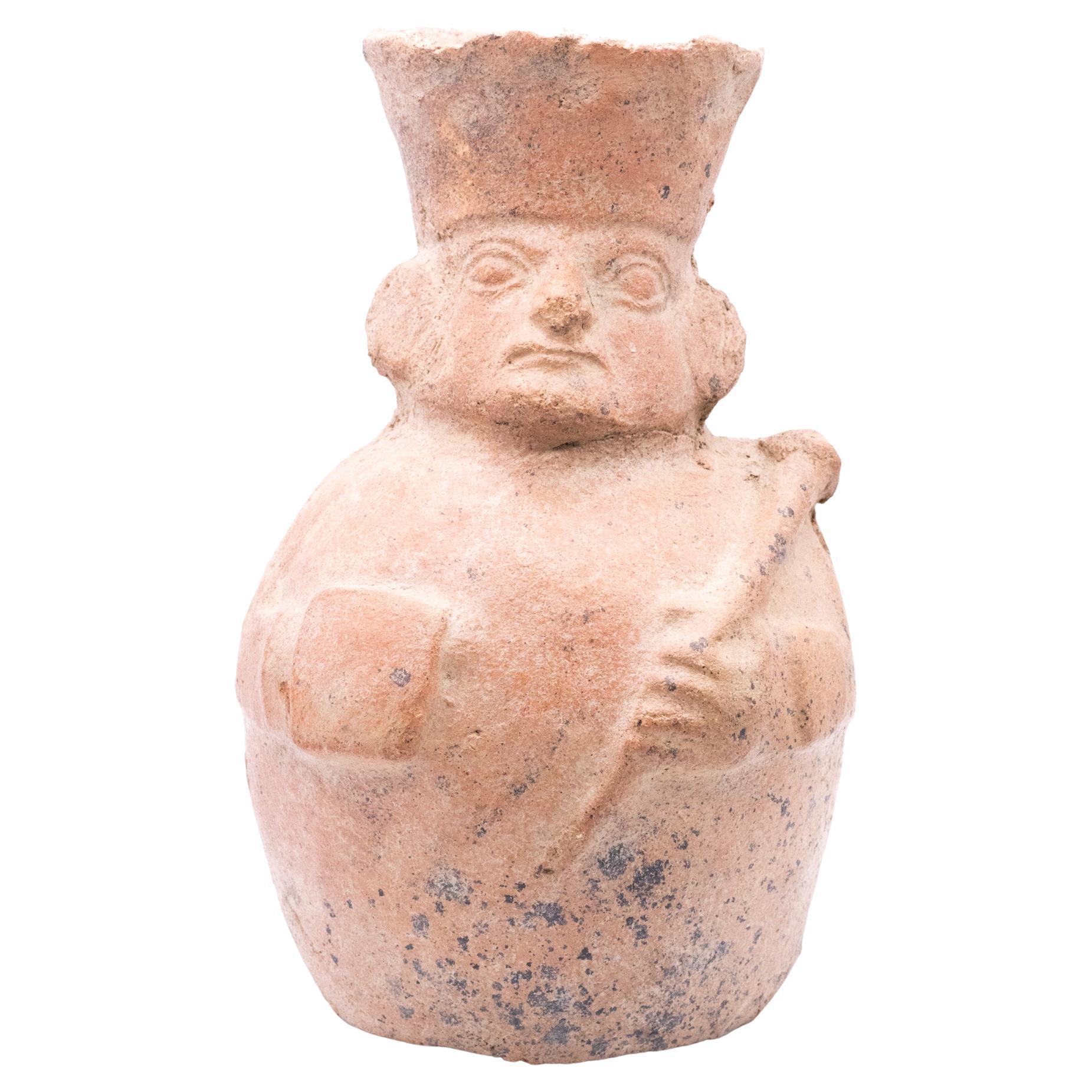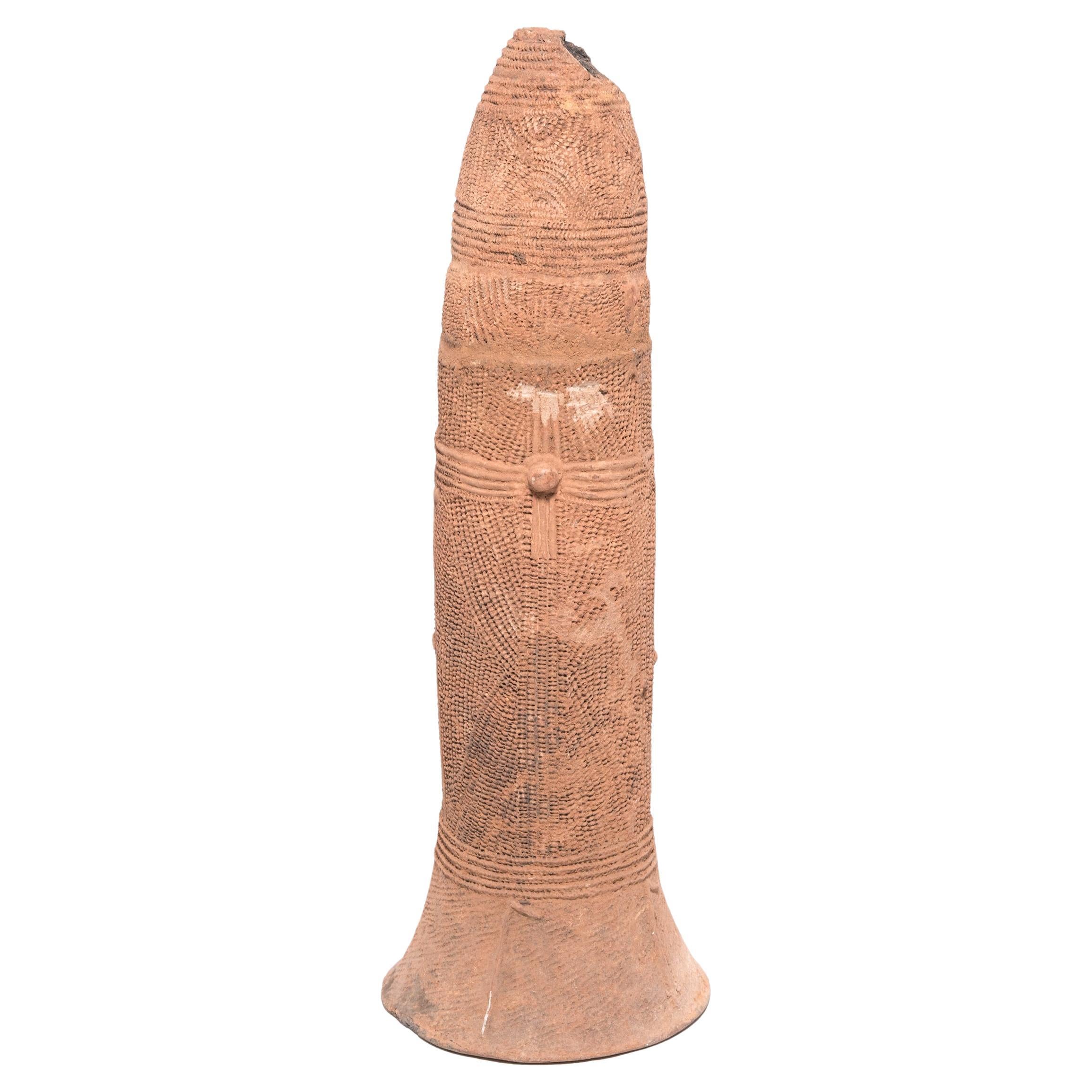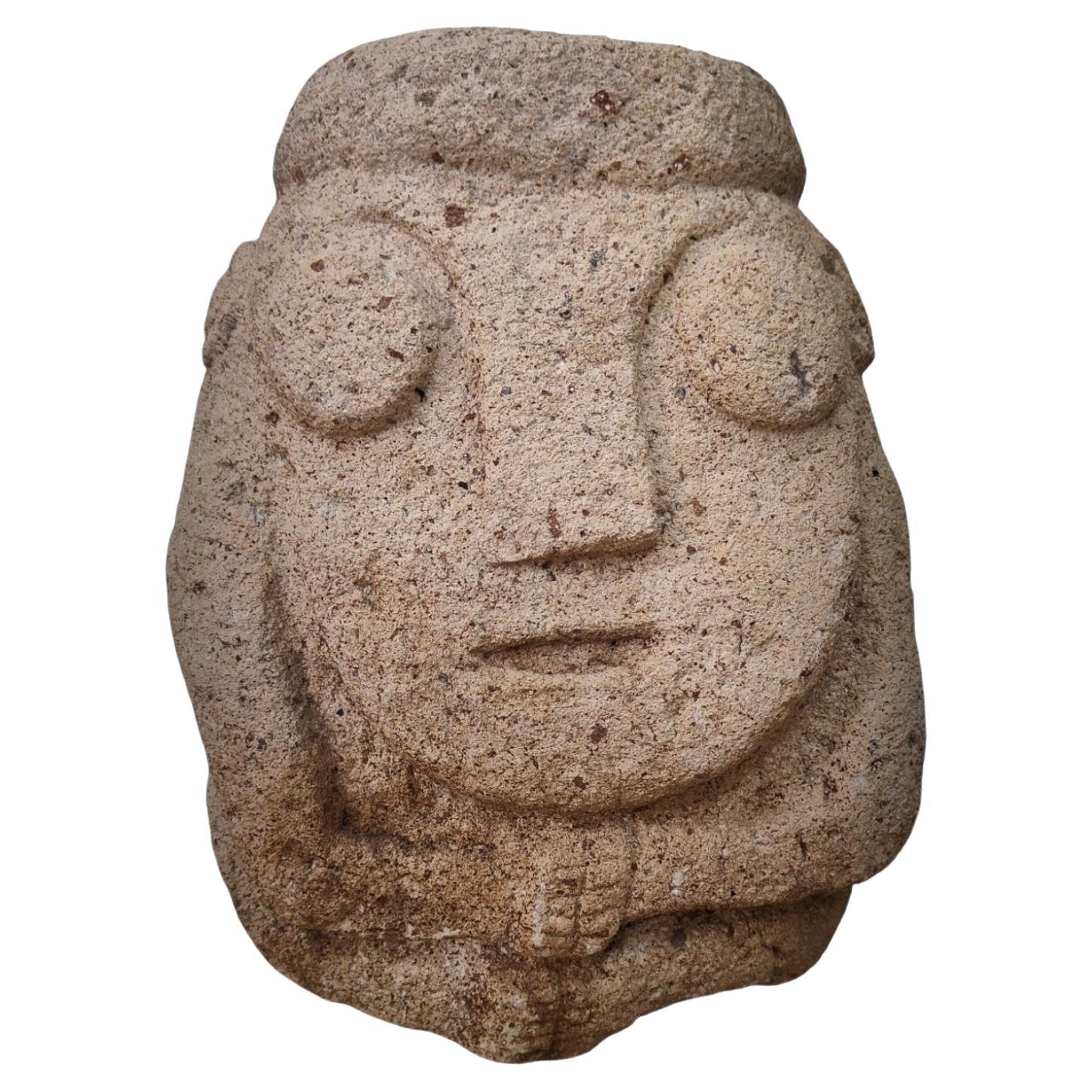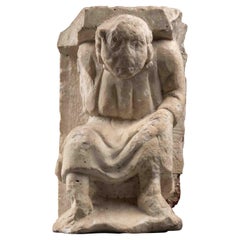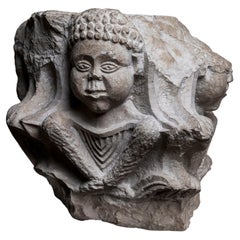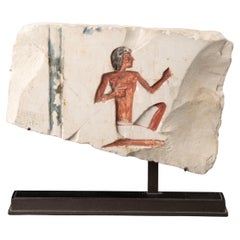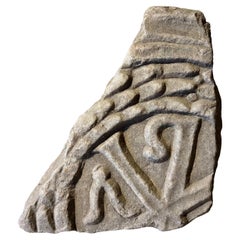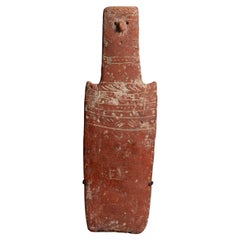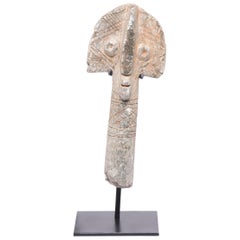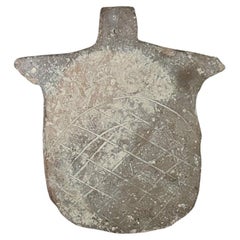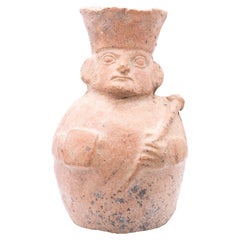Items Similar to Canaanite Anthropoid Coffin Lid - 12th-10th century BC
Want more images or videos?
Request additional images or videos from the seller
1 of 7
Canaanite Anthropoid Coffin Lid - 12th-10th century BC
$19,149.89
£14,126
€16,000
CA$26,533.14
A$28,809.83
CHF 15,256.91
MX$353,125.98
NOK 188,810.30
SEK 178,415.74
DKK 121,805.78
About the Item
Rare Canaanite Anthropoid Coffin Lid
Terra Cotta
12th – 10th Century BC
Provenance:
Public Auction Paris (2022)
Private Collection F. Antonovich (Paris – 1980s)
Art Loss Register: S00225680
TL-test: Re.S.Artes R 144672A (1560 – 560 BC)
Height: 42 cm
Width: 35 cm
Depth: 18 cm
- Dimensions:Height: 16.54 in (42 cm)Width: 13.78 in (35 cm)Depth: 7.09 in (18 cm)
- Style:Archaistic (Of the Period)
- Materials and Techniques:
- Place of Origin:
- Period:
- Date of Manufacture:12th century BC
- Condition:Wear consistent with age and use.
- Seller Location:Bruxelles, BE
- Reference Number:1stDibs: LU6666242647082
About the Seller
5.0
Vetted Professional Seller
Every seller passes strict standards for authenticity and reliability
1stDibs seller since 2022
15 sales on 1stDibs
Typical response time: <1 hour
- ShippingRetrieving quote...Shipping from: Bruxelles, Belgium
- Return Policy
Authenticity Guarantee
In the unlikely event there’s an issue with an item’s authenticity, contact us within 1 year for a full refund. DetailsMoney-Back Guarantee
If your item is not as described, is damaged in transit, or does not arrive, contact us within 7 days for a full refund. Details24-Hour Cancellation
You have a 24-hour grace period in which to reconsider your purchase, with no questions asked.Vetted Professional Sellers
Our world-class sellers must adhere to strict standards for service and quality, maintaining the integrity of our listings.Price-Match Guarantee
If you find that a seller listed the same item for a lower price elsewhere, we’ll match it.Trusted Global Delivery
Our best-in-class carrier network provides specialized shipping options worldwide, including custom delivery.More From This Seller
View AllRomanesque Telamon - Northern Italy, late 12th (Reemployed Roman marble)
Located in Bruxelles, BE
Telamon
Northern Italy, late 12th - early 13th century
Reemployed Roman marble
H 32 x L 18 x P 17 cm
« Sono coloro che hanno dimenticato che l’uomo é solo un bruco, destinato a dive...
Category
Antique 15th Century and Earlier Italian Medieval Figurative Sculptures
Materials
Marble
$23,937 Sale Price
20% Off
Rare Romanesque Capital Depicting Four Africans, Apulia, 13th Century
Located in Bruxelles, BE
Large stone capital carved on each side in strong relief. The basket is covered with two crowns of vertical acanthus leaves which sprout from the astragal and fill the space between ...
Category
Antique 15th Century and Earlier Italian Medieval Architectural Elements
Materials
Stone
$22,022 Sale Price
20% Off
Egyptian Fragment of a Seated Man - Ancient Egypt, 26th Dynasty (664-525 BC)
Located in Bruxelles, BE
Egyptian Fragment of a Seated Man
Limestone - polychromy
Ancient Egypt, 26th Dynasty (664-525 BC)
Most likely from the tomb of Montw-m-H3t
Provenanc...
Category
Antique 15th Century and Earlier Egyptian Egyptian Figurative Sculptures
Materials
Limestone
Marble Roman relief representing a Christogram
Located in Bruxelles, BE
Marble Roman relief representing a Christogram
Roman relief - 4th century
25 x 22 x 8 cm
Provenance :
Collection of the Château de B. À Nevers by Georges C.S., scholar born in 1833 and deceased in 1909
The entire castle and its collections were acquired in 1938 by the current owners of the estate
A christogram is a monogram or combination of letters that forms an abreviation for the name of Jesus Christ.
This rare fragment combines chi (X) and rho (P), the first two letters of Christ's name in Greek and it is one of the oldest and most popular early christian symbol. The monogram of Christ, or chrismon, is also a powerful symbol of imperial victory: it appeared to Emperor Constantine the Great before his battle against Maxentius in ad 312, promising victory in the name of Christ. In Plato's Timaeus, it is explained that the two bands which form the "world soul" (anima mundi...
Category
Antique 15th Century and Earlier Italian Classical Roman Figurative Scul...
Materials
Marble
$3,514 Sale Price
30% Off
Kapati textile - Epoque Byzantine; 4th–5th Century C.E
Located in Bruxelles, BE
Kapati Textile
Byzantine Period; 4th–5th Century C.E.
Materials: Plant and Animal Fibers, Wool
9,5 x 9,5 cm
This woolen fabric is woven in the traditional Coptic Kapati style, characteristic of Egypt during the Christian era. The name "Kapati" refers to the Copts of Egypt and describes a weaving technique that does not use embroidery or printing. It is said that Al-Muqawqis, the governor of Egypt, offered the Prophet garments made from Kapati fabric.
At the 1900 Exposition Universelle in Paris, the French archaeologist Albert Gayet showcased the results of his excavations from the winter of 1898-1899. Around one hundred Coptic textiles and fragments were displayed at the Palais du Costume. Their aesthetic generated considerable enthusiasm, particularly among artists like Auguste Rodin and Henri Matisse. This led to a "Coptomania," which, among other things, influenced fashion designers.
The square fragment features black decoration on a beige background; the two squares at the center are separated by scalloped edges, from which hang various ornaments or geometric motifs. At the center of the fragment is an image of a dancing figure surrounded by geometric decorations. This piece dates back to a time when ancient...
Category
Antique 15th Century and Earlier Egyptian Egyptian Antiquities
Materials
Wool, Natural Fiber
17th century twisted column
Located in Bruxelles, BE
Twisted Column
Italy, 17th Century
H 22 cm x diameter 21,5 cm
central hole diameter : 9,2 cm
This sculpted stone, dating from the 17th century, is a fragment of a twisted or helical...
Category
Antique 17th Century Italian Renaissance Planters and Jardinieres
Materials
Stone
You May Also Like
Cypriot Bronze Age Terracotta Plank Idol
Located in London, GB
This extremely well-preserved, stylised Cypriot plank idol is an iconic form of human representation from Bronze Age Cyprus. Made from burnished earthenware with lime-filled incision...
Category
Antique 15th Century and Earlier Cypriot Prehistoric Abstract Sculptures
Materials
Terracotta
African Bura Stone Funerary Marker
Located in Chicago, IL
This abstract stone sculpture is a funerary marker of the Bura people of the Niger/Mali region. Little is known about the Bura civilization (c. 200 to 1000 AD), but it shares many of...
Category
Antique 15th Century and Earlier Nigerien Primitive Mounted Objects
Materials
Stone
Anatolian Ceramic Idol, Early Bronze Age circa 2700-2400 BCE
Located in Vosselaar, BE
A interesting example of a kusura type bronze age idol. These are usually found in marble but this one is in ceramic. These idols represent a stylized female shape and represent fert...
Category
Antique 15th Century and Earlier Turkish Archaistic Antiquities
Materials
Ceramic
Peru Pre Inca 100-700 Ad Moche Pre Columbian Personified Vessel in Earthenware
Located in Miami, FL
Rare pre Hispanic Moche culture, pre-Inca earthenware vessel.
A beautiful interesting piece, created in the southern Peru region around the 100-700 AD by the Moche culture. This rare early period...
Category
Antique 15th Century and Earlier Peruvian Pre-Columbian Antiquities
Materials
Earthenware, Pottery
$1,645 Sale Price
30% Off
Terracotta Bura Spirit Vessel, c. 1900
Located in Chicago, IL
Sometimes called a "Bura bell" due to its shape, this sculptural terra cotta object was part of the Bura tribe's burial ritual. Buried with its flared mouth facing down, this cylindrical storage...
Category
Early 20th Century Nigerien Tribal Abstract Sculptures
Materials
Terracotta
Stone Carved Anthropomorphic Sculpture From The Recuay Culture Peru 400bc-400ac
Located in Madrid, ES
ANTHROPOMORPHIC SCULPTURE CARVED IN STONE OF THE RECUAY CULTURE PERU 400BC-400AC
Recuay is an archaeological culture of Ancient Peru that developed in the Sierra of the current Peruvian department of Áncash between 200 AD. C. until 600 d. C. It corresponds to the stage called Regional Developments, it has also been called the Huaylas or Santa culture.
Like the other Early Intermediate cultures, little is known about this culture. The most accepted position is that it was an extension of the Chavin culture, after the influence of the "White on Red" style in the region. Regarding the political aspect of the recuay, there is a hypothesis that questions their autonomy and maintains that Recuay would be part of one of the many political units that made up the Moche state.
The recuay style, characterized by its ceramics and stone sculpture, was initially described by Eduard Seler in 1893, based on ceramic specimens brought to the Ethnographic Museum in Berlin by Mariano M. Macedo. Seler named this style of pottery Recuay, based on the report that these pieces had been found in the town of Recuay. Later studies showed that this characteristic pottery was not originally from Recuay but from Copa, near Carhuaz, for which reason the name change to that of this town was proposed. Eventually the name of Huaylas was used for this culture. In 1919 Julio C. Tello explored the area and recovered lithic sculptures and Recuay-type ceramics. In the 1960s Rafael Larco Hoyle proposed changing the names of Recuay and Copa to Santa, arguing that the Recuay style had originated in the coastal regions of the Santa Valley. However, the name Recuay has persisted.
Its chronology is also highly debatable. The time of its origin between 0 and 200 AD is discussed. C. and its end or collapse is commonly set to 600 d. C. probably caused by the invasion of the Huari conquerors.
It encompassed almost the entire Callejón de Huaylas, a narrow valley fed by the Santa River and enclosed between two mountain ranges, the Cordillera Blanca to the west and the Cordillera Negra to the east. Its influence extended to the east to the Marañón river basin and to the west to the upper parts of the Santa, Casma and Huarmey valleys. To the north it reached the town of Pashash, in the province of Pallasca.
The Copa area, Marca district, Recuay province, Ancash department seems to have been the center or main nucleus of cohesion of this culture. The name of the culture would then be justified, derived from the province of the same name. Other important settlements were those of Huilcahuaín (near the current city of Ancash), Cátac, Araucay, Tambo, Jancu, Upayacu and Pashash (near the current city of Cabana).
Its main form of expression of art was through stone work (carving and masonry), inherited from its predecessor, the Chavín culture. In addition, they made sculptures in lumps that represent warriors with shields or trophy heads, with which they decorated their complex architectural constructions. They also made white clay pottery...
Category
Antique 15th Century and Earlier Figurative Sculptures
Materials
Stone
More Ways To Browse
12th Century Sculpture
Used Horse Drawn Wagons
Van Braam
Vanity Round Mirror
Vincent De Paul
Vintage Applique Patterns
Vintage Horse Bridle
Vintage Montgomery Wards
Water Cooler
Whimsical Teapot
Wood Carving With Silver Inlay
Woodblock Triptych
Wooden Base Silver
Wooden Horse Head
Yixing Teapot
12th Century Sculpture
16th Century Wood Chest
1800s American Furniture
